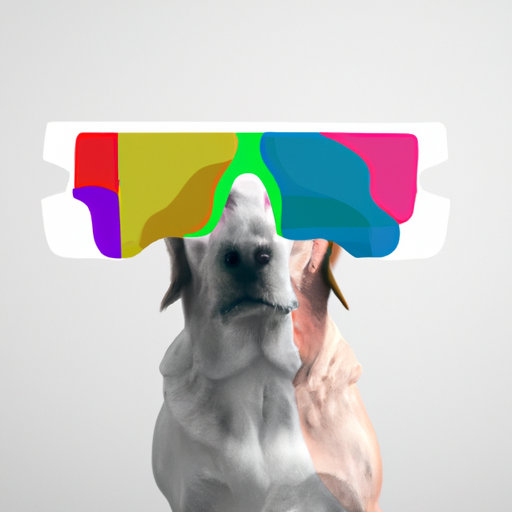When you gaze into your dog’s eyes, you may wonder what they truly see. As a caregiver, understanding your pet’s perception can help you communicate better with them and cater to their needs. Scientists have been intrigued by this question too: how do dogs see human faces?
In this article, we’ll dive deep into the fascinating world of canine vision and cognition. We’ll explore how dogs perceive human faces, how their vision differs from ours, and how this impacts their interactions with us.
- Understanding Canine Vision
- Comparing Human and Canine Vision
- How Dogs Perceive Human Faces
- The Role of Smell and Hearing
- Implications for Dog Owners
- Frequently Asked Questions
Key Takeaways
- Dogs perceive human faces differently than people.
- Dogs rely on a combination of sight, smell, and hearing to recognize humans.
- Understanding how dogs perceive us can enhance our relationships with them.
Understanding Canine Vision
Dogs don’t see the world the same way we do. Their vision is specialized for their lifestyle as predators – not for recognizing human faces. They have fewer color receptors and more motion detectors, which enables them to spot movement even in low light conditions.
On the other hand, dogs have lower visual acuity than humans. This means their vision is less detailed and more blurry than ours. In a sense, they see the world in a “lower resolution” than we do.
You can learn more about canine vision in this comprehensive article by Psychology Today.
Comparing Human and Canine Vision
To better understand how dogs see human faces, let’s compare their vision to ours.
Humans have trichromatic vision, which means we perceive colors using three types of photoreceptor cells in our eyes. These cells, called cones, allow us to see a wide spectrum of colors.
Dogs, however, are dichromats. They have only two types of cones, which limits their color perception. They see colors in shades of blue and yellow but cannot distinguish red and green.
Here’s a simple comparison of human and dog vision:
| Aspect | Human Vision | Dog Vision |
|---|---|---|
| Color Perception | Trichromatic (red, green, blue) | Dichromatic (blue, yellow) |
| Visual Acuity | High (20/20) | Low (20/75) |
| Night Vision | Poor | Excellent |
| Peripheral Vision | Limited | Broad |
How Dogs Perceive Human Faces
Studies have shown that dogs can recognize human faces. However, they don’t rely solely on vision for this task. Dogs combine visual information with scent and auditory cues to create a multi-sensory “portrait” of individuals.
Research conducted by the University of Helsinki found that dogs can discriminate between familiar and unfamiliar human faces. However, they use different parts of their brain to process human faces compared to dog faces. This suggests that dogs perceive human faces differently from their own species. You can read more about this study here.
The Role of Smell and Hearing
While vision plays a role in how dogs perceive human faces, it’s not the only sense they use. Dogs have an extraordinary sense of smell that is integral to their perception of the world. They can identify individuals based on scent alone, and they often use this ability to recognize their human companions.
Hearing is another important factor in how dogs perceive humans. Dogs can recognize the sound of their owner’s voice and may associate it with their face.
Implications for Dog Owners
Understanding how your dog perceives you can strengthen your bond with them. You can use this knowledge to communicate more effectively with your pet and cater to their needs.
Here are some tips:
– Since dogs are sensitive to movement, use hand signals when training them.
– Remember that your dog may not see details as clearly as you do. Ensure their environment is safe and free from potential hazards.
– Use your voice and scent to help your dog recognize you.
Frequently Asked Questions
1. Can dogs recognize their owners?
Yes, dogs can recognize their owners. They use a combination of sight, smell, and hearing to identify individuals.
2. Do dogs see in color or black and white?
Dogs see in color, but their color perception is limited compared to humans. They can see shades of blue and yellow but not red or green.
3. How well do dogs see in the dark?
Dogs have excellent night vision compared to humans. This is due to a structure in their eyes called the tapetum lucidum, which reflects light and enhances vision in low light conditions.
To dive deeper into the world of dogs and their perception, be sure to explore these articles on OneTopDog:
- Understanding Your Dog’s Senses
- The Science Behind Dog Cognition
- How to Communicate Effectively with Your Dog
In conclusion, dogs perceive human faces differently than we do. By understanding their unique perspective, we can foster a deeper connection with our four-legged friends.



